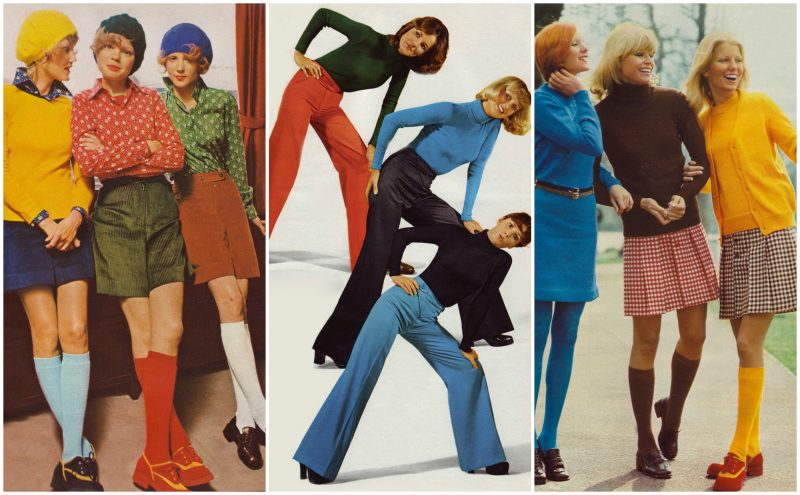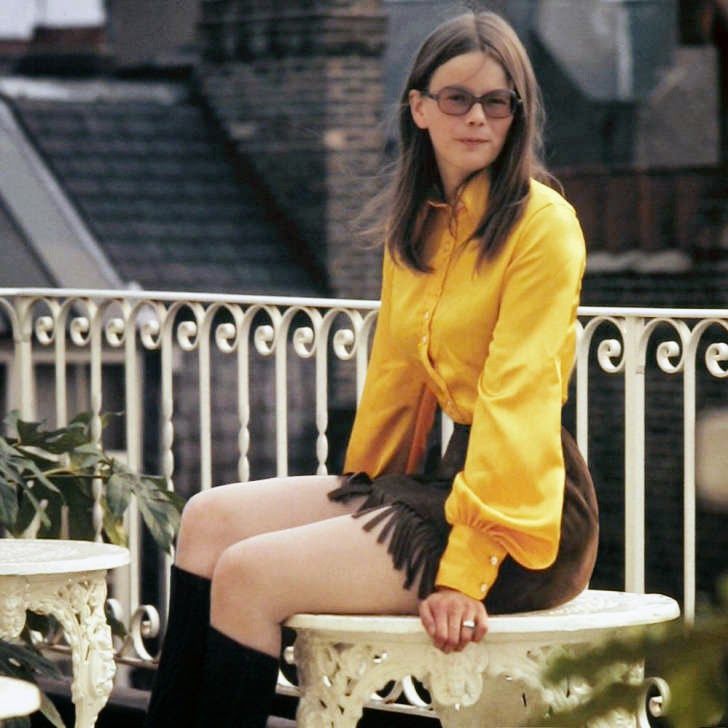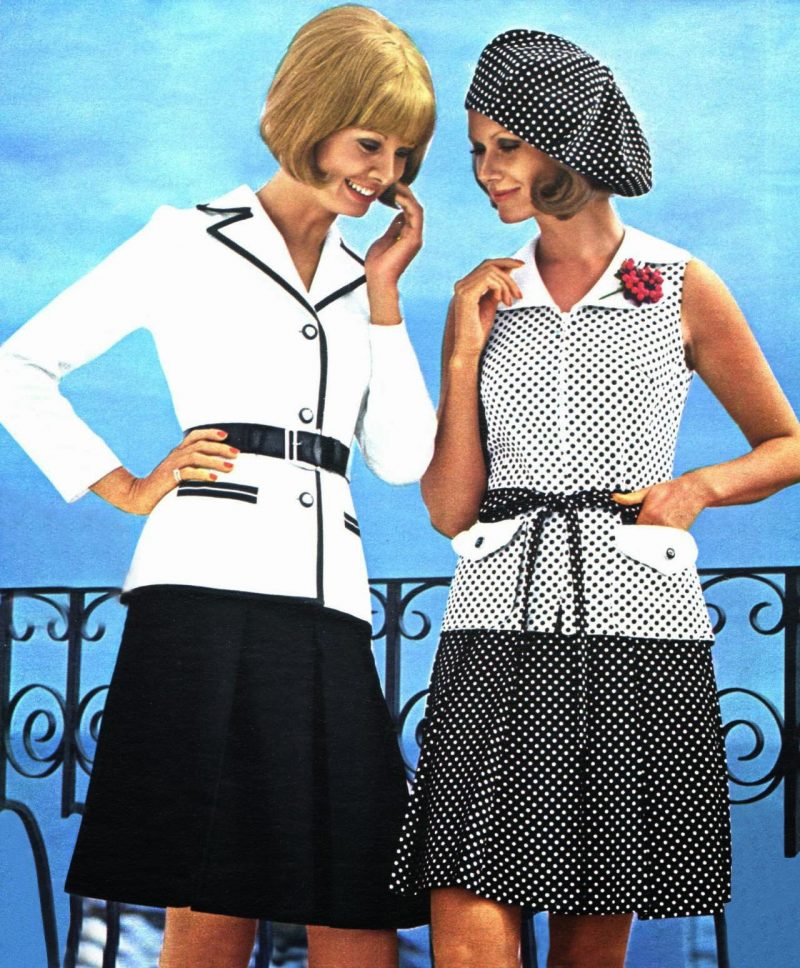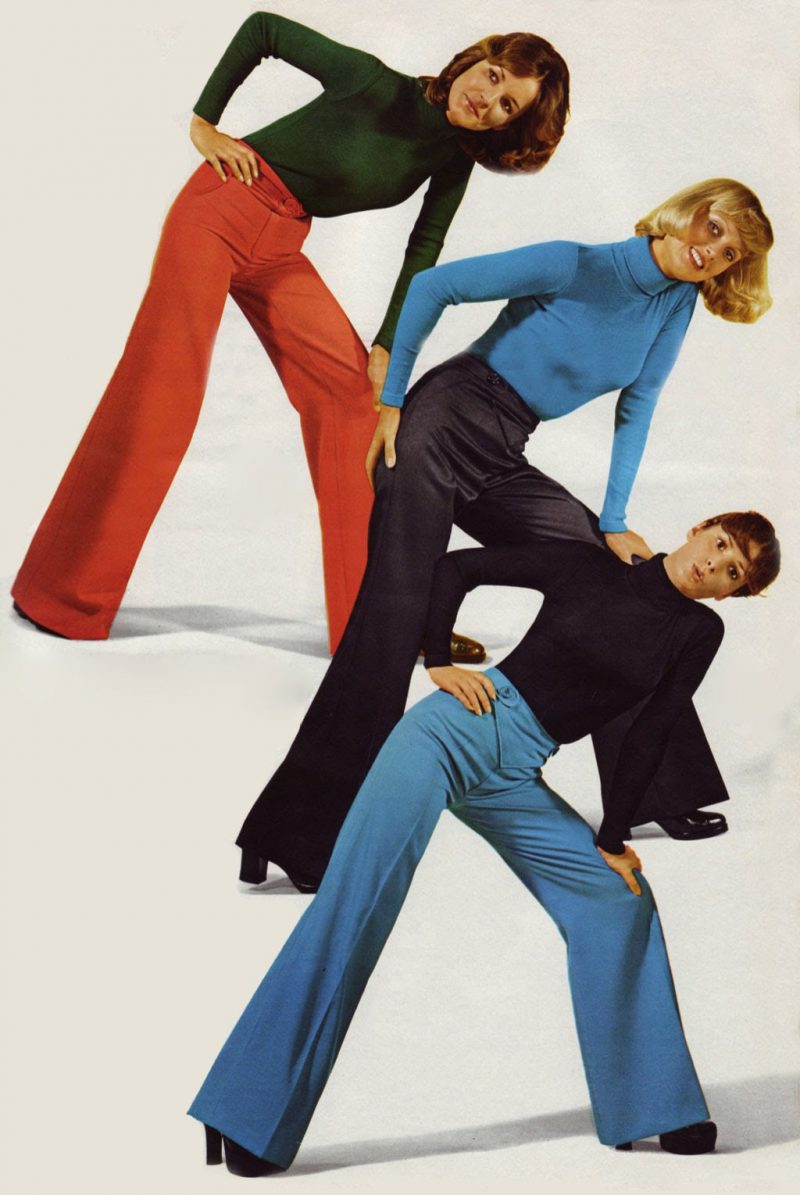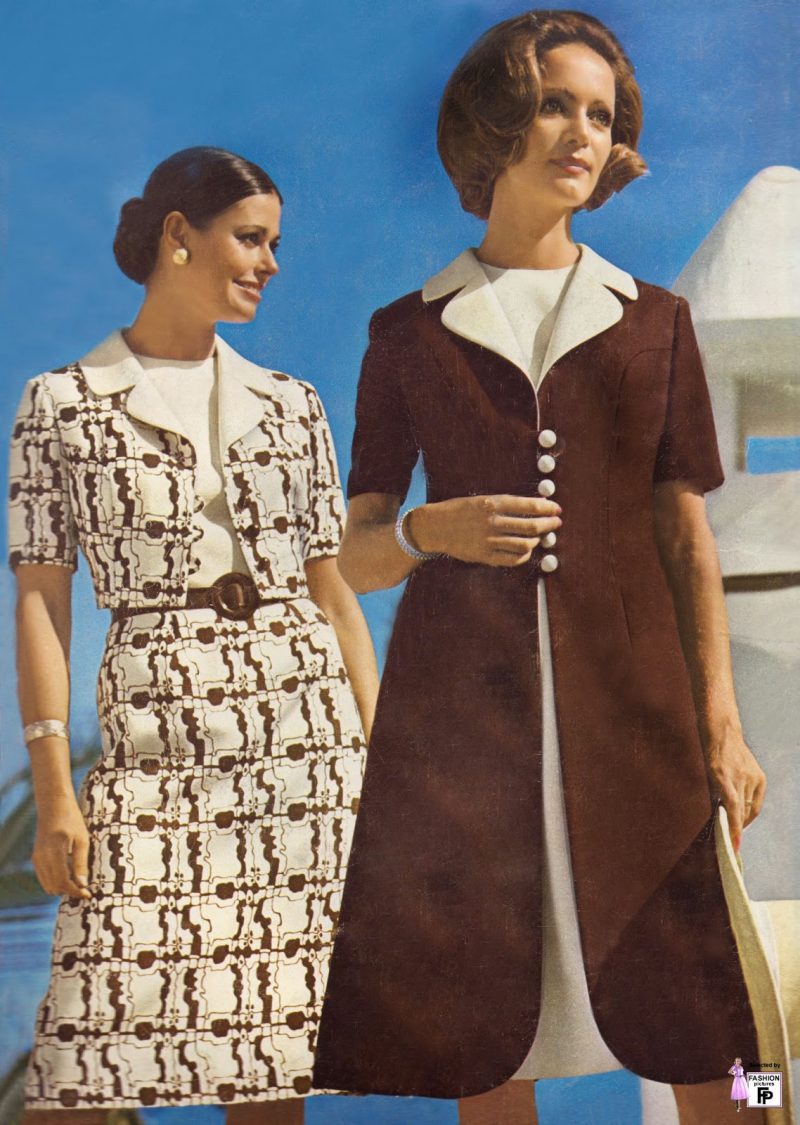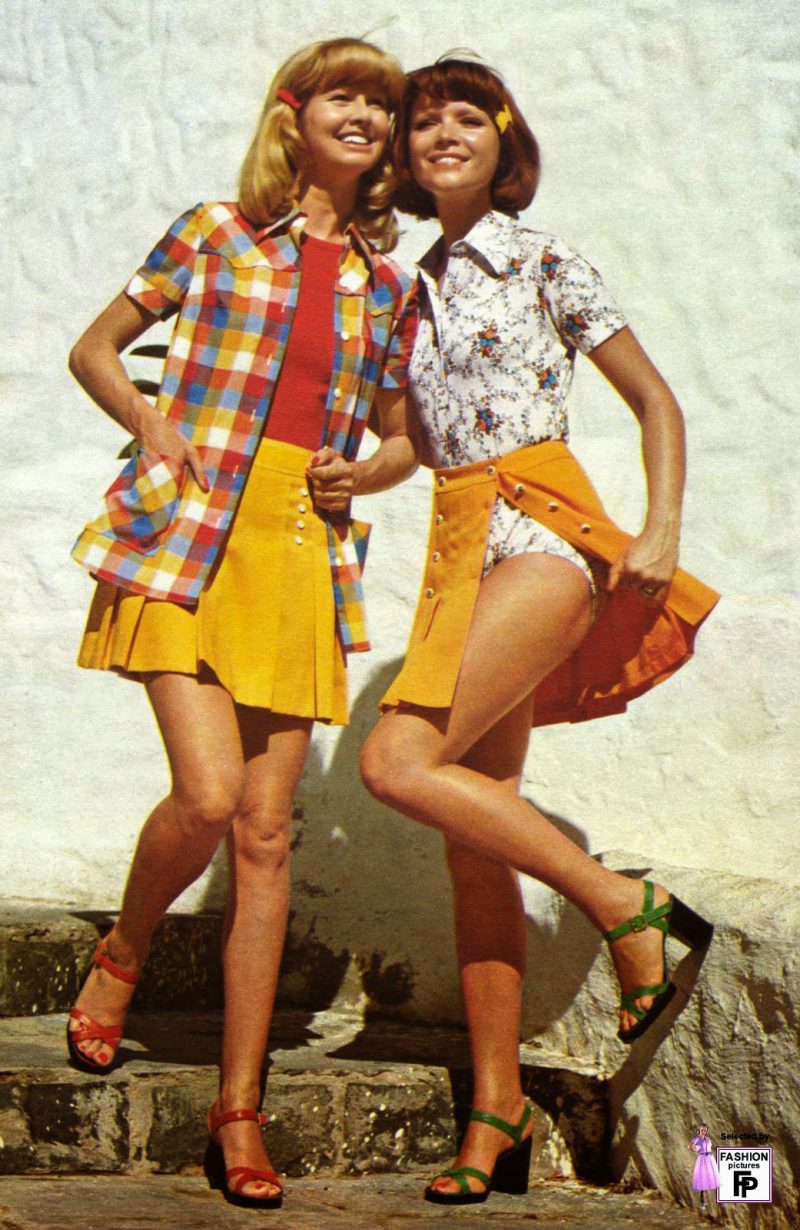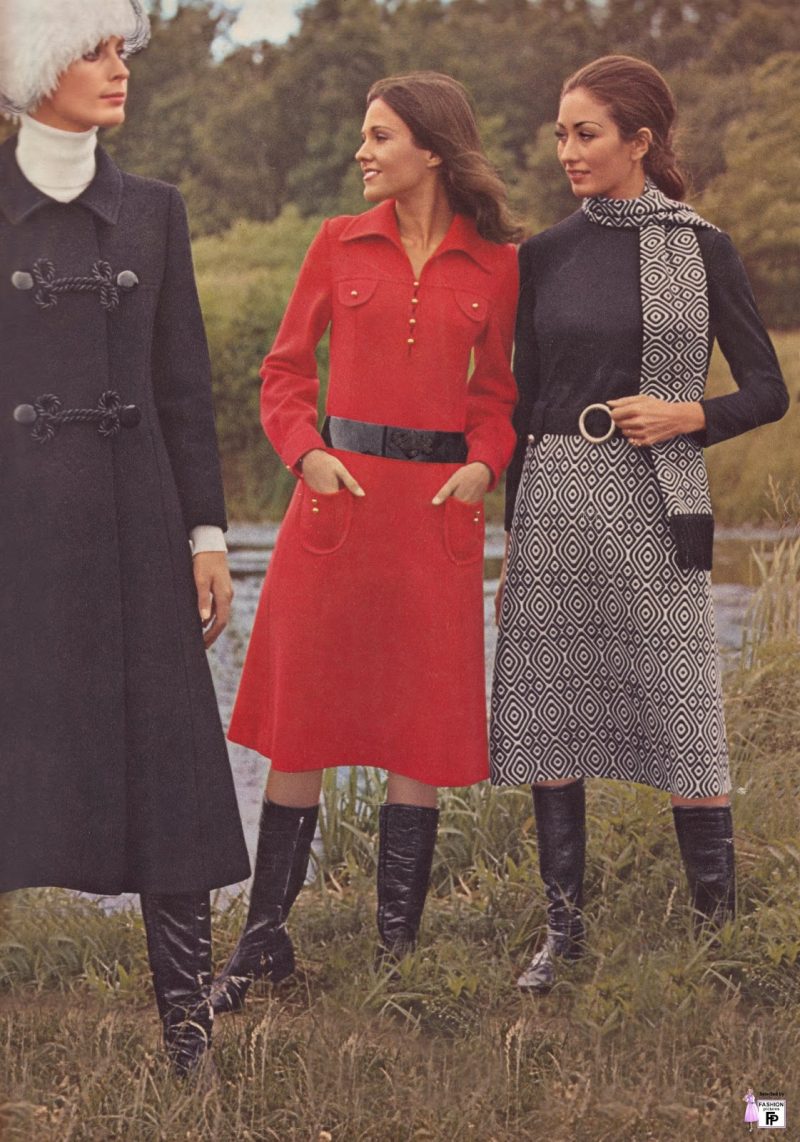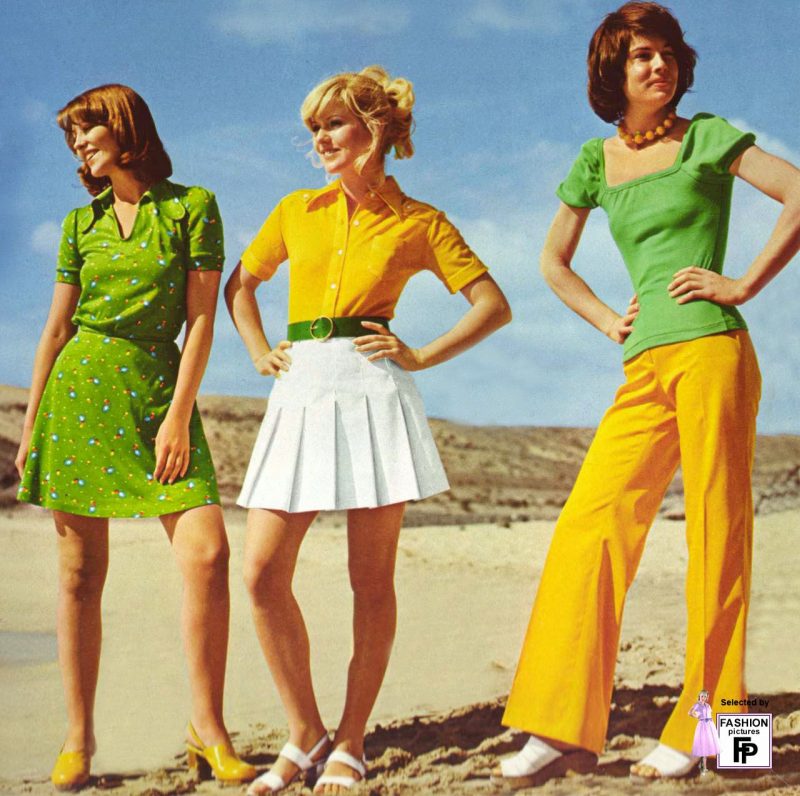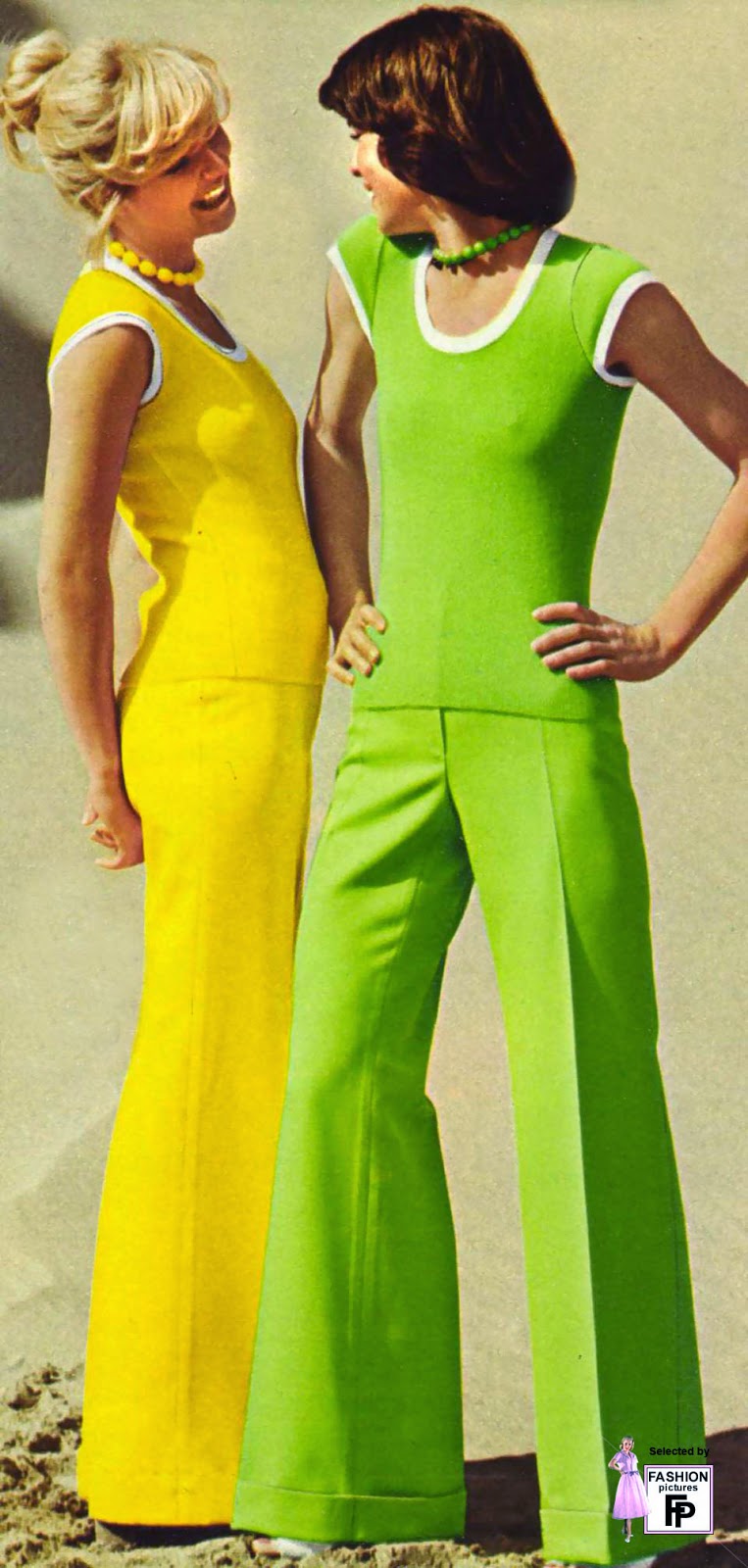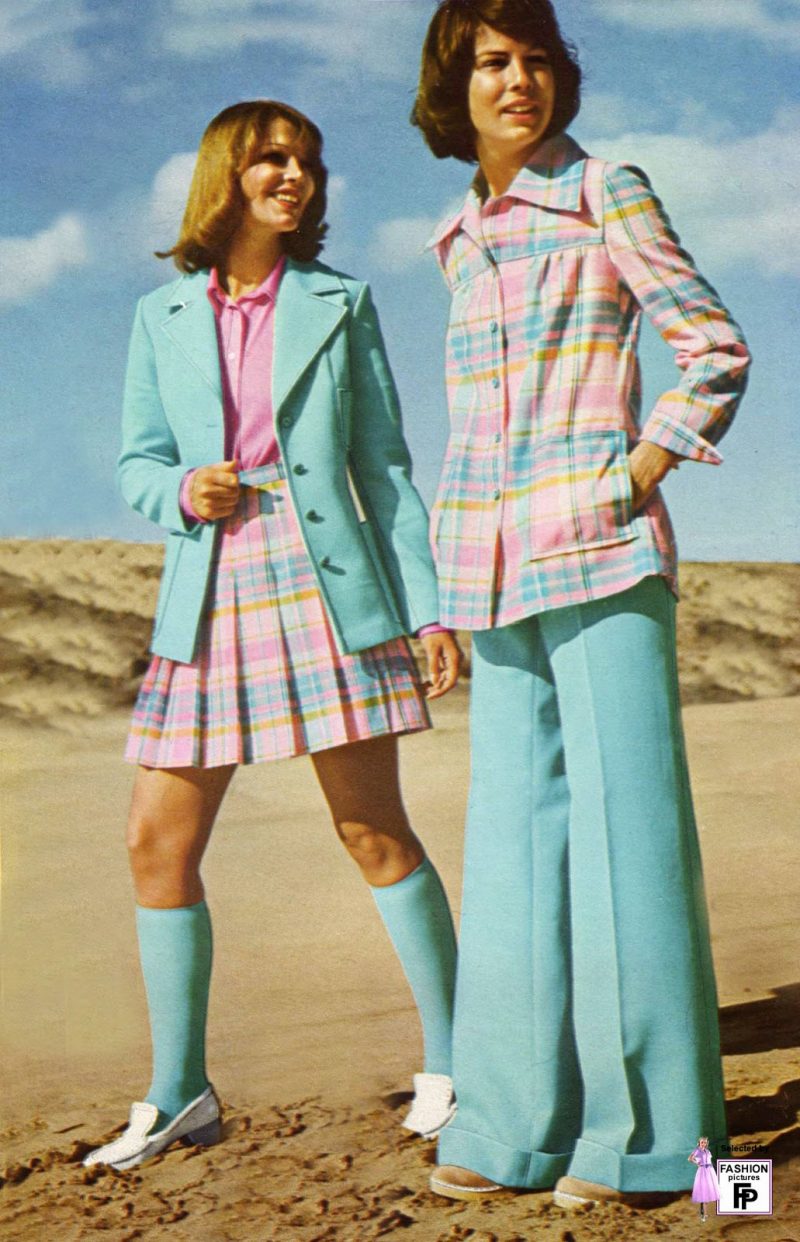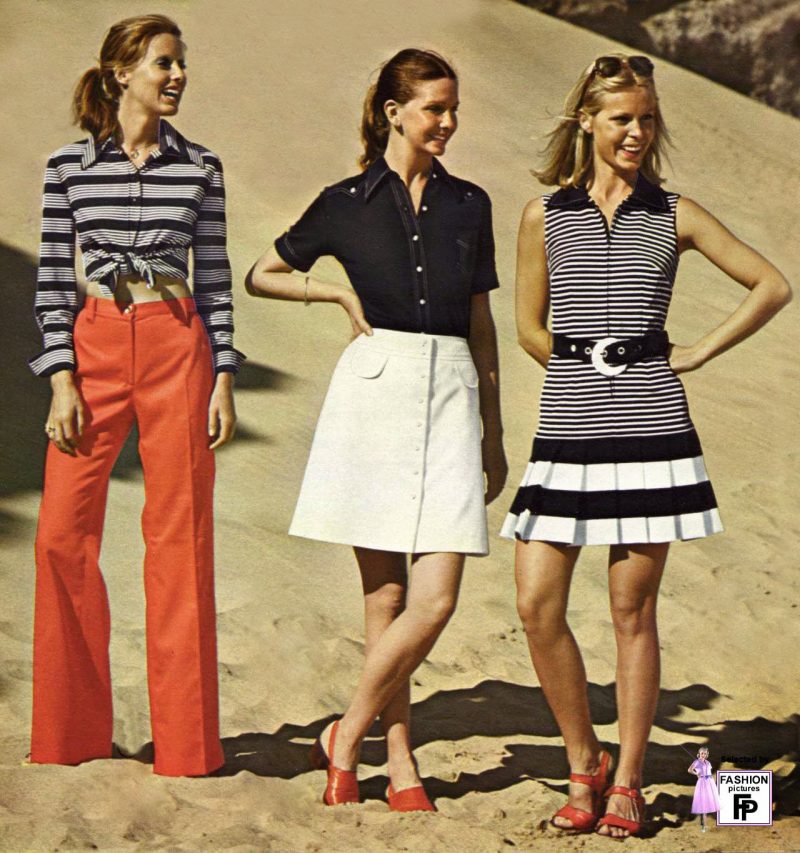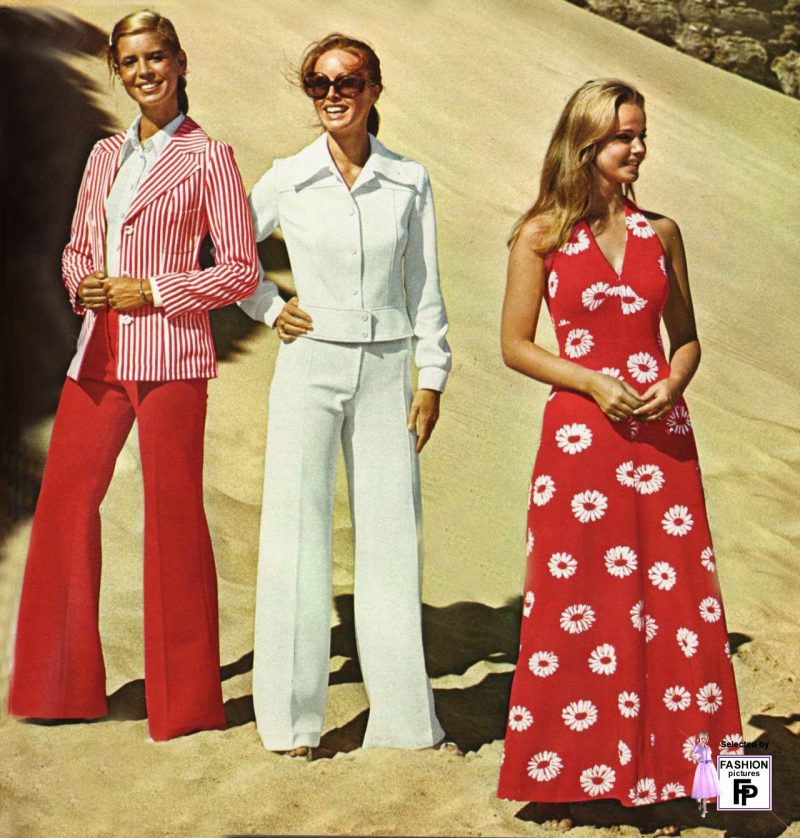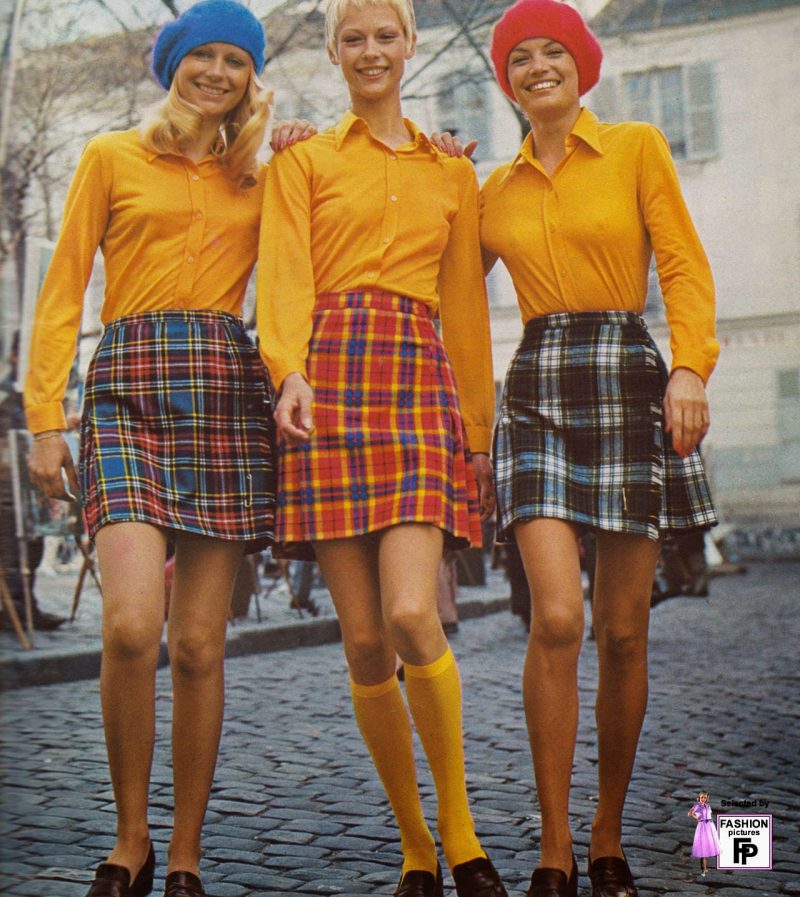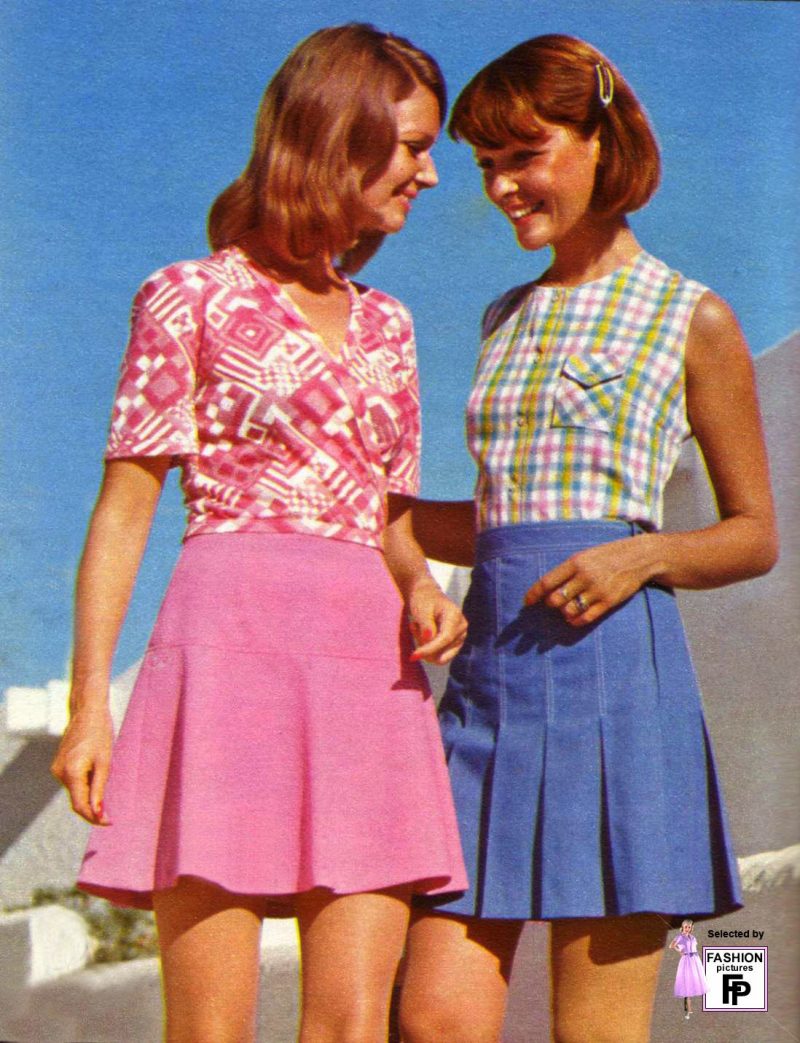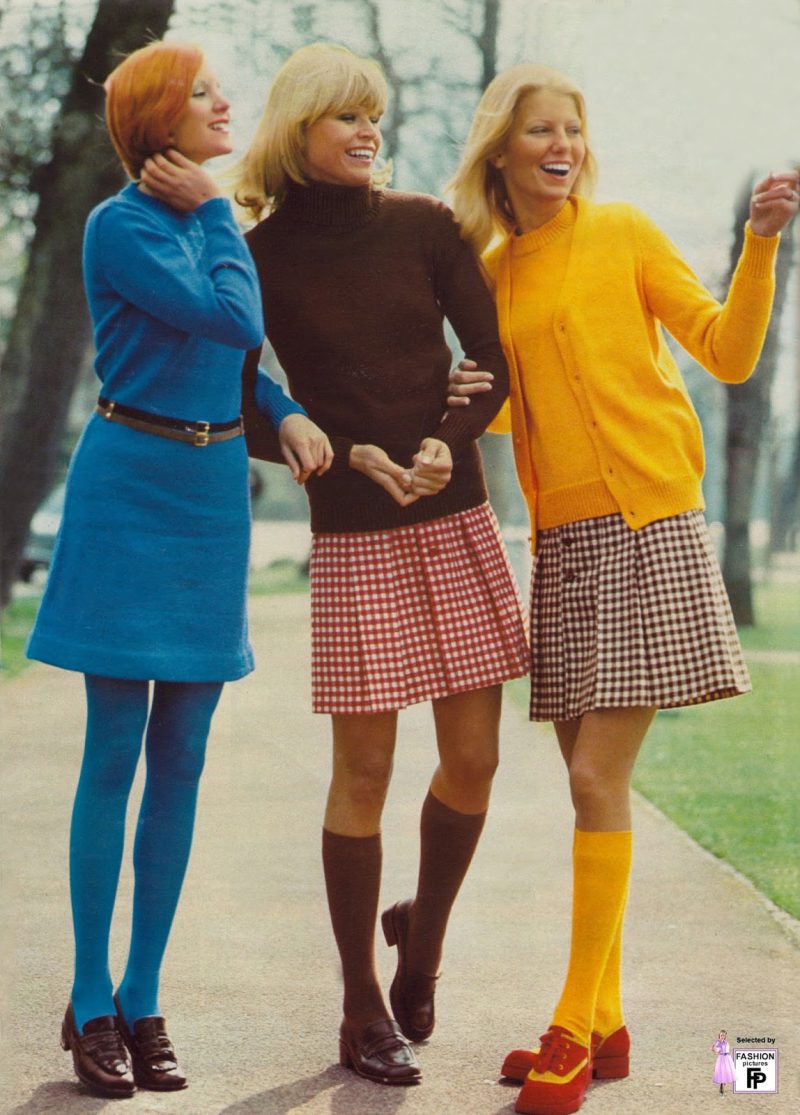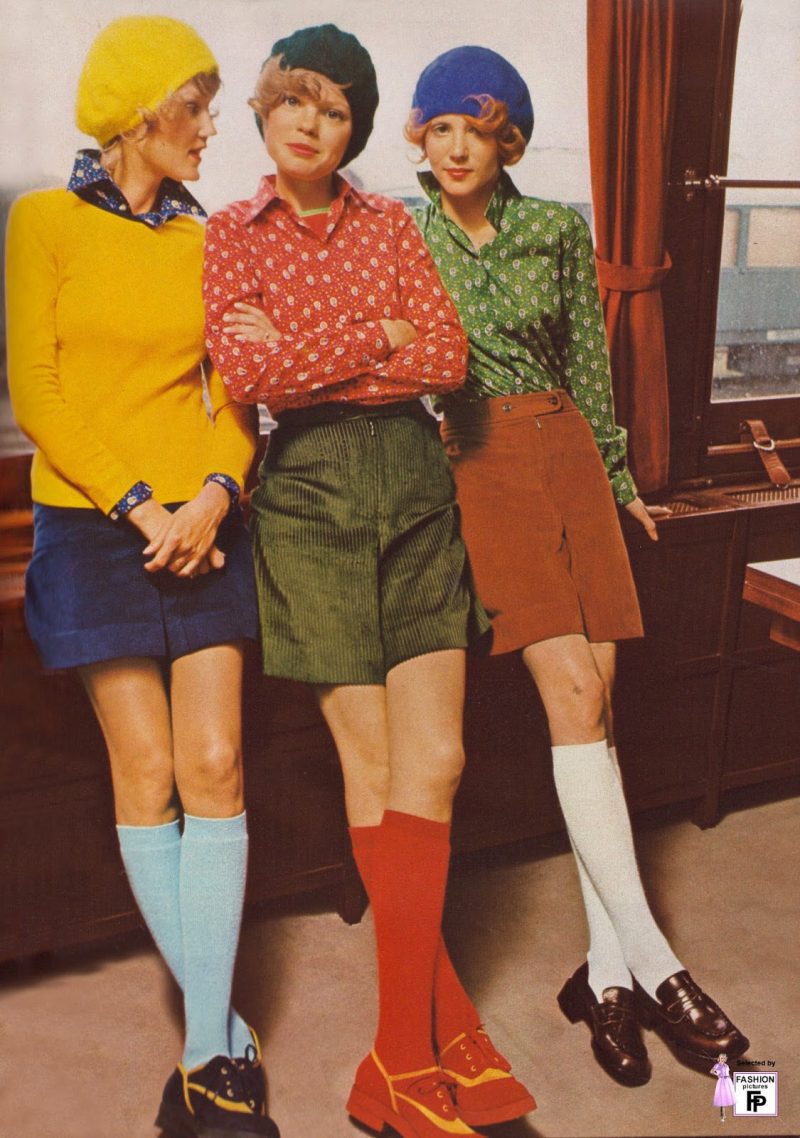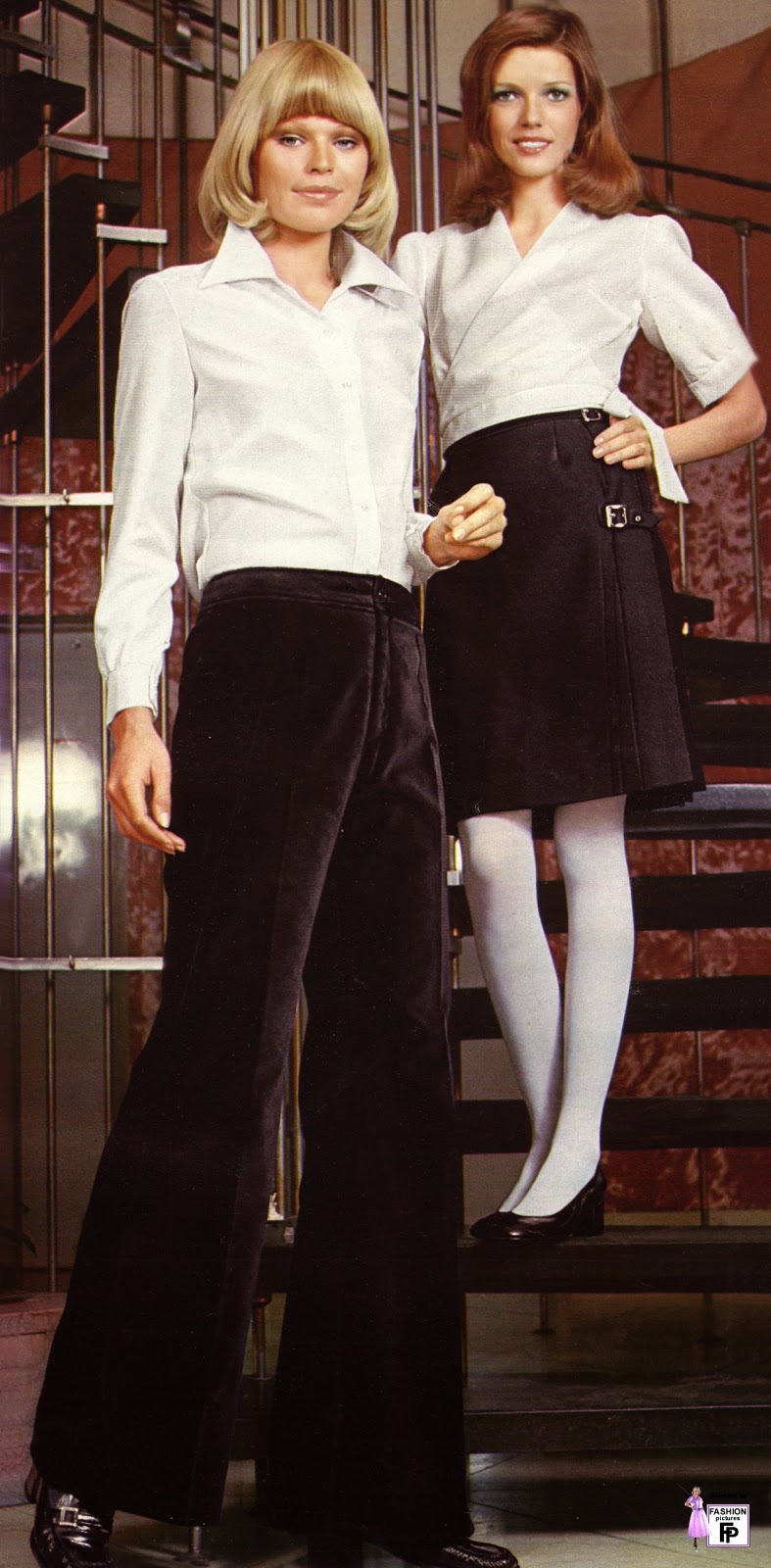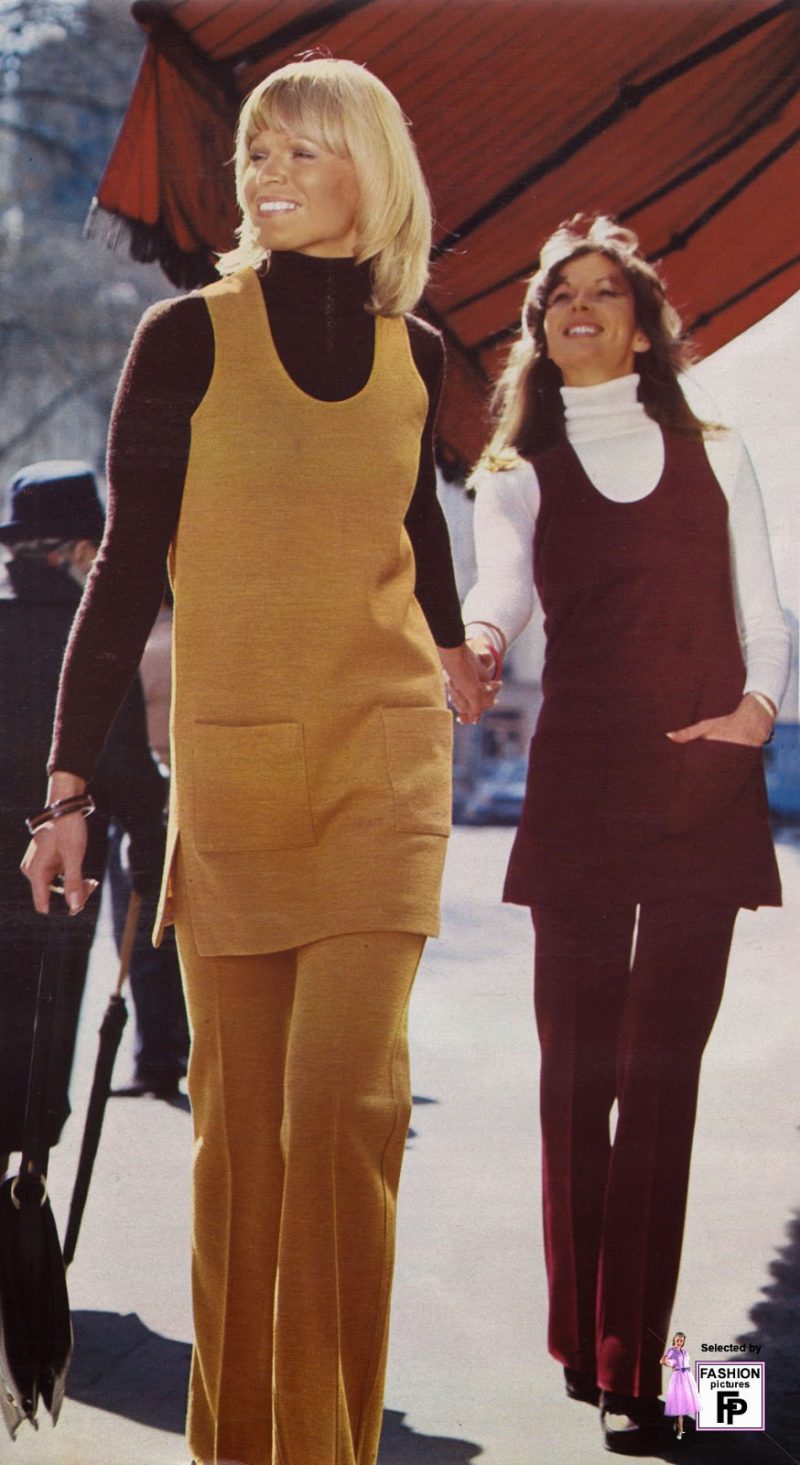Fashion in the 1970s began with a continuation of the mini skirts, bell-bottoms, and the androgynous hippie look from the late 1960s and eventually became an iconic decade for fashion. The decade began with a revival of the hippie look from the 1960s, giving a distinct ethnic flavor. Popular early 1970s fashions for women included Tie dye shirts, Mexican peasant blouses, folk-embroidered Hungarian blouses, ponchos, capes, and military surplus clothing.Bottom attire for women during this time included bell-bottoms, gauchos, frayed jeans midis” (which were unpopular), and ankle-length dresses called “maxis” were also worn in the early 1970s, thus offering women three different skirt lengths. Hippie clothing during this time was made in extremely bright colors, as well as Indian patterns, Native American patterns, and floral patterns.Women’s hippie accessories of the early 1970s included chokers, dog collars, handcrafted neck ornaments, and accessories made from natural elements like wood, shells, stones, feathers, Indian beads, and leather. All of these replaced standard jewelry. Unisex hippie accessories included headbands, floppy hats, balumba balls, flowing scarves, Birkenstocks, and earth shoes.
Generally, the most famous silhouette of the mid and late 1970s for both genders was that of tight on top and loose on the bottom. The 1970s also saw the birth of the indifferent, anti-conformist casual chic approach to fashion, which consisted of sweaters, t-shirts, jeans, and sneakers.
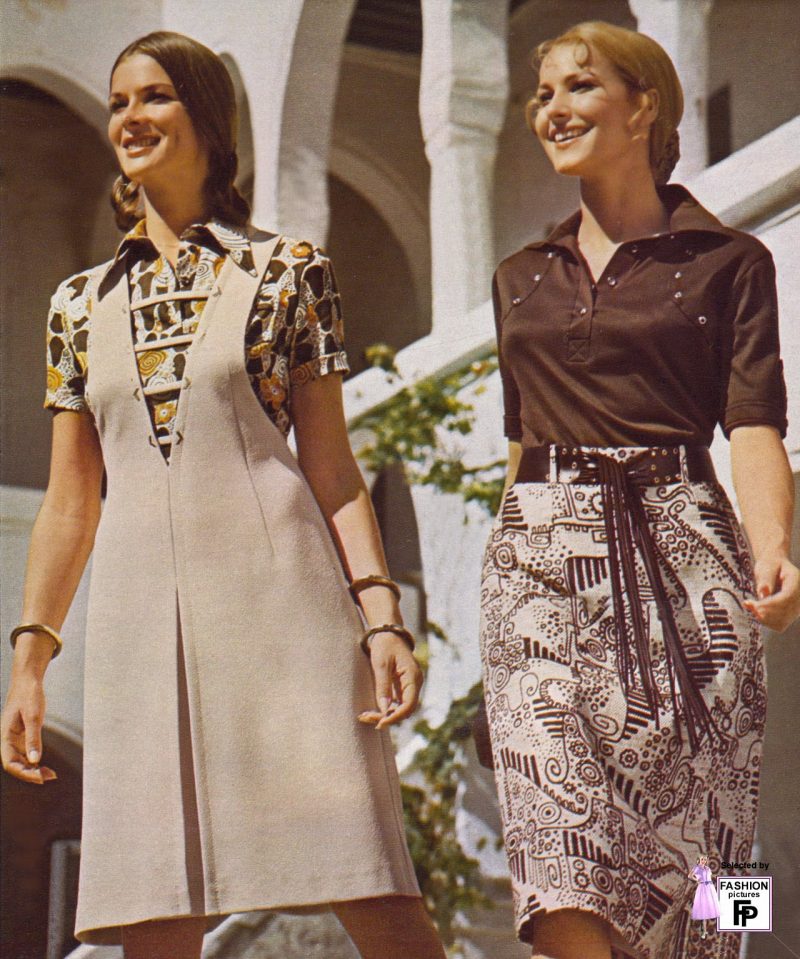
Glamorous women’s accessories of the early 1970s included cloche hats or turbans, pearl earrings, necklaces, and bracelets, feather boas, black-veiled hats, clogs, wedgies, cork-soled platforms, and chunky high heels. Golden chains, gold-button earrings and rhinestone clips started to become popular again in 1973 after several years of homemade jewelry.In the early 1970s, boots were at the height of their popularity, continuing onward from the mid-1960s. Women had boots for every occasion, with a wide variety of styles being sold in stores for affordable prices. Despite the wide variety, the most popular boots were Go-go boots, crinkle boots (boots with a shiny wet look that was wrinkled), stretch boots, and granny boots (1920s style lace-up boots that ended just below the knees)
